If you have a hard time deciding which bat to choose (between composite vs alloy bats), then yes, you’re on the right page!
Well, it’s been a hot topic to debate since the beginning. For some, composite bats perform better than alloy bats, while the rest have a different opinion. Being the most popular ones in the market, both composite and alloy bats have their distinctive significance.
With that said, alloy bats are more potent and durable than composite bats due to their material.
However, composite bats, made of graphite and carbon, provide the player with a better swing. To understand more about bats and choose wisely, stay with us as we explain everything in detail.
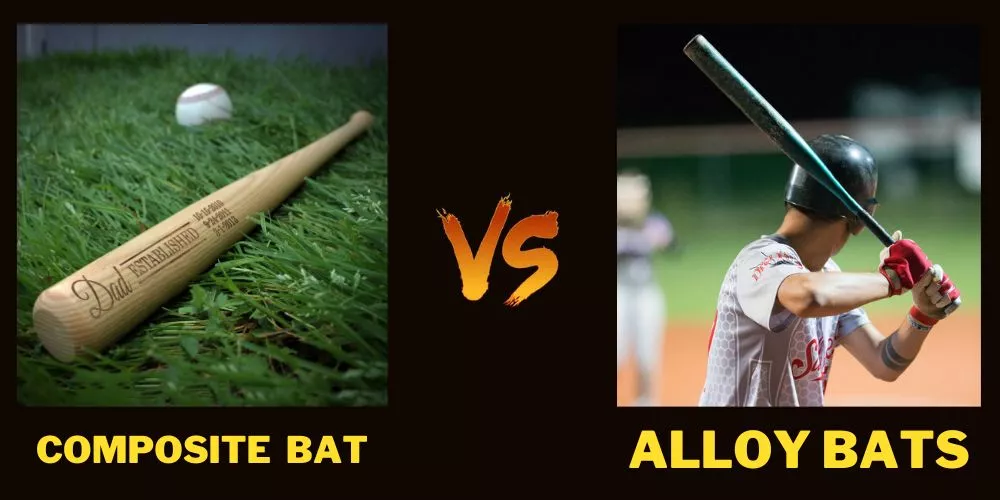
What is a Composite Bat?
In simple words, composite bats are once made of composite materials. These materials generally include carbon fibers or fiber polymers as the prime component. Apart from this, other materials like graphite and fiberglass can also be used in manufacturing.
Well, the use of carbon fibers is preferred overall. This is because it adds multiple commendable features to make the composite bats advantageous.
Moreover, it also provides the best layer to the bat enabling better weight distribution and a larger sweet spot.
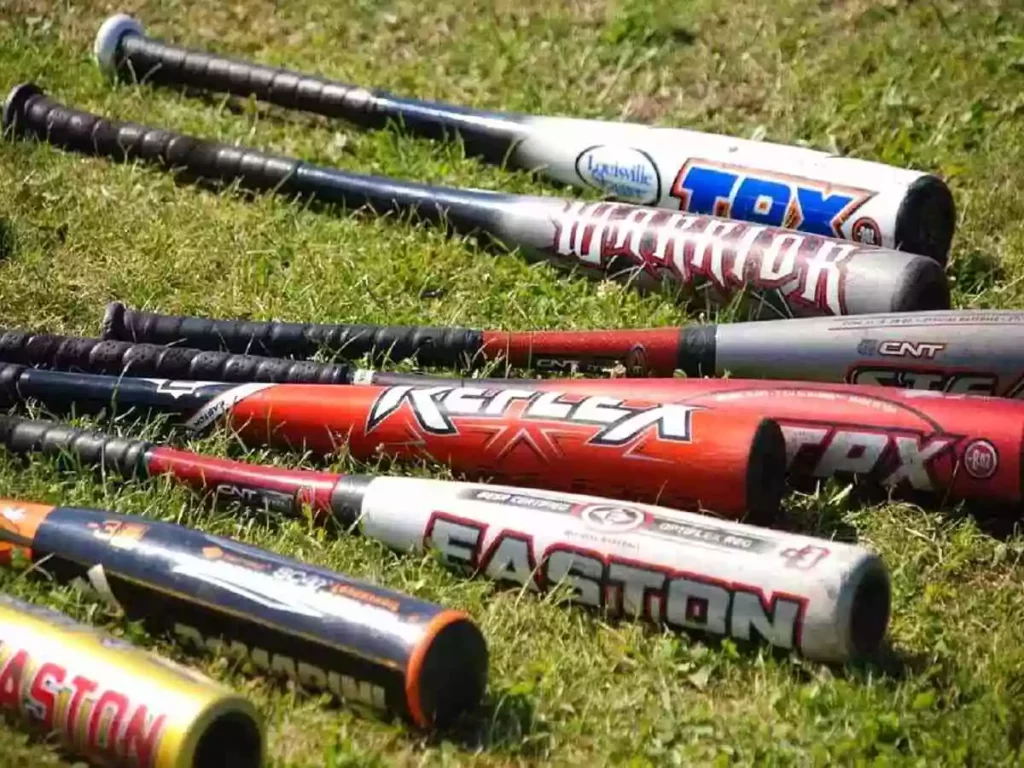
Well, composite bats can come as both single-piece and double-piece bats. The barrel and handle are made from the same piece of carbon fibre in a single-piece bat.
Whereas, in a two-piece composite bat, the barrel and handle are made of different composite materials mended in a similar manner. Further, composite bats are very different from hybrid bats and may have a little in common.
What is a Alloy Bat?
Mostly made of aluminum alloy, the production of these bats started in the 1970s. Although they aren’t used in higher leagues like MLB, smaller leagues use them.
Along with aluminum, the alloy consists of two or more other metals with distinctive properties. For best results, the alloys are layered on each other multiple times.
Well, the varying properties of aluminum alloy let the manufacturers design these bats with different characteristics.
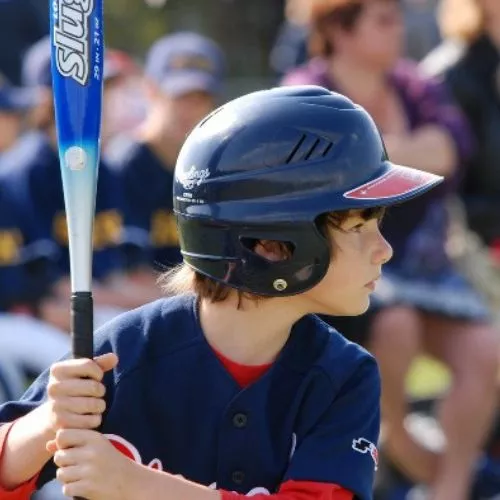
In higher leagues like MLB, the best wooden bats are usually used. However, the youth baseball dugouts prefer the use of alloy bats after lifting from Wiffle ball bats. Moreover, you may even find your coach using a fungo bat while teaching, but he will certainly shift to alloy bats whenever needed.
Composite vs Alloy Bats (A Detailed Comparison)
Here I will try to address the composite vs alloy bats debate to help you choose the one for your own need. There are pros and cons of both the bat types, and that you first need to know about before taking an informed decision.
Pros and Cons of Composite Bat
To start with the pros of composite bats, we have:
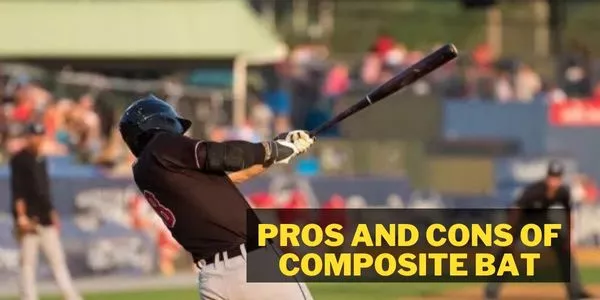
Larger sweet spot
The prime benefit of composite bats is that it presents the players with more pop. Made of fibre polymers, composite bats hit much faster and better than alloy or wooden bats. Also, it features the trampoline effect better than the rest. Therefore, using a composite bat will make the baseball fly faster without any extra effort.
Better Balance
Composite bats provide the batters a better and balanced swing than other bats. This is because it comprises plastic properties and can let itself stretch evenly around the barrel. Well, while playing with a composite bat, players get to pass on more of their weight.
Lightweight
Composite bats are lighter than alloy bats. This is because they can maintain their length-to-weight ratio in a better manner. Also, since they are made of lighter materials like carbon fiber Or other fiber polymers, these are usually lighter than the rest.
Less Sting
The carbon fiber body of a composite bat reduces the sting that a batter feels to a great extent. Well, this is simply done by efficiently controlling the stinging vibration.
Well, to talk about the cons of composite bats, we have:
Expensive
Due to their high demand, composite bats are very expensive. This is also because a composite bat surpasses an alloy bat in terms of design and performance. Certain brands sell them at a few hundred dollars and the shipping prices.
Not suitable for cold weather
Composite bats are bad for cold weather as they have a high chance of breaking. However, when it breaks, you’ll get warning signals in the form of vertical cracks that may appear along the length of the barrel. Consisting of both pros and cons, composite bats are one of the best choices baseball players make while playing.
Pros and Cons Of Alloy Bat
The advantages of using alloy bats are:
Great Durability
Aluminum bats are known to last longer than composite bats. This is because of the quality material used and repetitive layering before manufacturing. Due to its durability, younger batters prefer playing with alloy bats to enhance their performance using a single bat.
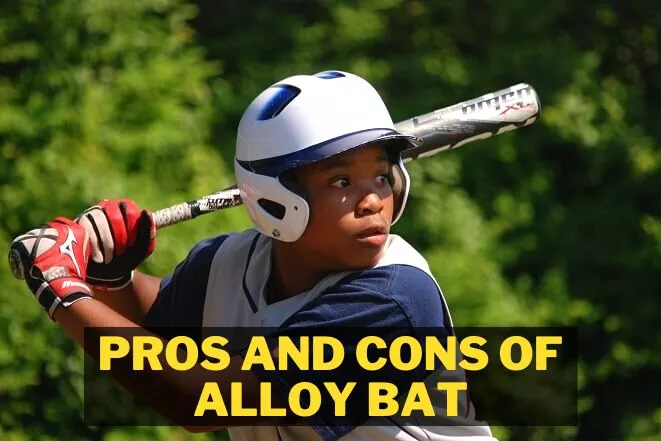
Louder Ping
Admit it or not, the loudness of the pinging sound often determines the success of your hits. Louder the sound, the better the hit. Therefore, this sound is produced only by allowing bats to guide the players to a great extent.
Less Expensive
Although surprising, alloy bats are cheaper than composite or wooden bats. Despite being less expensive than the other types, this bat is certainly the best for any new player to improve his performance.
Does not requires Break-in time
Yes, bats require a break-in. However, when using alloy bats, you’ll be surprised to see that it doesn’t require any break-in. Break-in is more familiar to the catchers as they are accustomed to the phrase “ break in a baseball glove”.
Now, to highlight the cons of playing with an alloy bat are:
Prone to Dents
As it is made of metal, alloy bats don’t break like composite or wooden ones. Rather they are susceptible to dent Formation. Therefore, in this case, you should either look for a warranty or replace your bat immediately. This is because damaged bats cannot be used while playing leagues.
Not good for cold weather
Alloy bats are suitable for playing in cooler temperatures as it becomes stiffer than normal. The cold atmosphere greatly affects the internal structure of the bat and makes it heavier.
If used in this case, the bat won’t be able to handle the stress from the hit, resulting in a mishap. Considering both sides of an alloy bat, it’s certainly the top preference of all young and pro players.
composite vs alloy bats (Which Is Better?)
The differences between composite and metal bats are substantial. But as mentioned, each has advantages and disadvantages.
Therefore, you must consider your needs while making your decision! Since MLB only permits wooden bats, for instance, you only need to make contact if you are a youth league contact hitter. In this case, purchasing a composite bat is a good choice.
However, an end-loaded metal bat is the option to choose if you’re a power hitter with extra strength who requires something durable.
Related: Baseball vs Softball Bats Comparison
Frequently Asked Questions (FAQs)
Do composite or alloy bats have more pop?
Composite bats have a higher pop than aluminum or wooden bats. This is because the aluminum bats are made of a complex mixture of carbon fiber materials and drive the baseball off the barrel at higher speeds and with more force.
Do alloy or composite bats last longer?
Alloy bats last longer. The durability of aluminum bats is one of their main benefits. The lifespan of these bats will typically be greater than that of composite. Additionally, since they don’t need a break-in period, they work best immediately when taken out of the box.
When should you not use composite bats?
It is never advised to use composite baseball bats when the temperature is below 60 degrees. Well, this is due to an increase in performance issues and cracking risks.
Do alloy bats lose Pop?
Although bats rarely shatter because of aluminum’s characteristics, they eventually lose their pop. This occurs after using it for a commendable longer period.
At what temperature is it safe to use a composite bat?
It is advised to only use composite bats in temperatures between 50 and 85 degrees. Sometimes the barrel of a composite bat will shatter when struck in cooler weather. Therefore, avoiding its use in cold weather is a good decision.
Can you hit heavy balls with a composite bat?
Yes, you can easily hit heavier balls with a composite bat. However, hitting weighted balls may result in dents in their jersey and nice.
